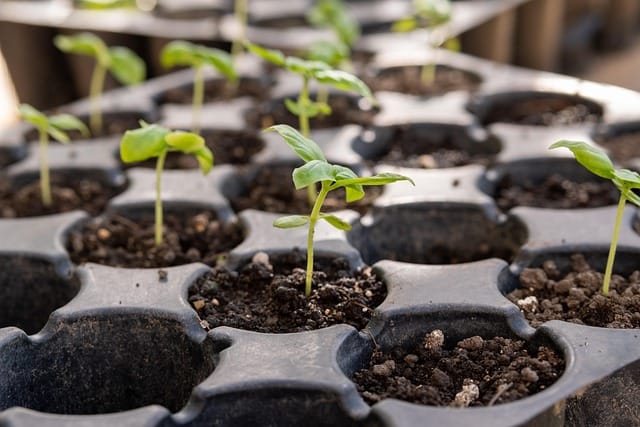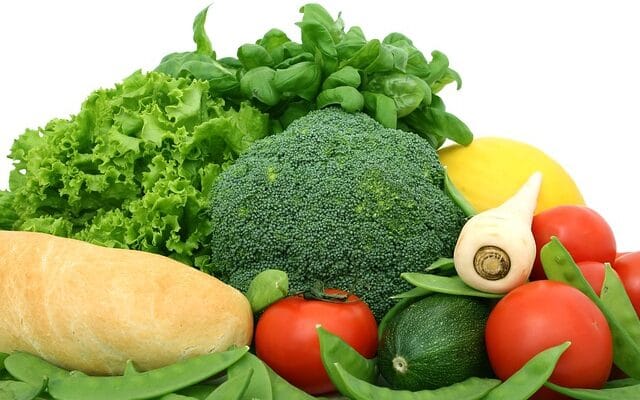Disclosure: This post may contain affiliate links, meaning we get a commission if you decide to make a purchase through our links, at no cost to you. See our full disclosure here.
Hey there, fellow garden enthusiasts! It’s Kevin Mansoor, your friendly garden expert, here to help you and your family embark on a thrilling adventure of growing your own vegetables.
Imagine stepping into your backyard and being greeted by a vibrant tapestry of colors, the sweet scent of homegrown tomatoes filling the air, and the joyful sounds of your kiddos discovering a hidden cucumber or a plump pumpkin. That’s the magic of gardening—it’s not just about growing food; it’s about cultivating memories, experiences, and a deeper connection with nature.
In this post, I’ll explore how to transform your backyard into a flourishing vegetable haven that the family can enjoy. I’ll explore the secrets of planning your garden, from selecting the perfect sunny spot to involving your little ones in choosing which vegetables to plant.
So, grab your gardening gloves, gather your family, and let’s embark on this flavor-filled adventure together!
Homegrown Veggies: An Overview
Now, let’s dive into the heart of our topic: how homegrown vegetables can be an exciting and inclusive family activity. I’ll be your guide, leading you through every step of the journey, from the initial planning stages to the joyous harvest of your vegetables.
I’ll start by exploring the exciting world of garden planning, where you’ll learn how to choose the perfect location for your vegetable haven, considering sunlight, soil conditions, and accessibility for everyone in the family. I’ll also discuss the importance of involving your little ones and allowing them to choose some of the plants they want to grow, encouraging a sense of ownership and excitement for the gardening adventure ahead.
Next, I’ll delve into the practical aspects of planting your garden, covering everything from starting seeds indoors to transplanting seedlings and direct sowing. I’ll share tips on how to make planting an exciting and engaging activity for kids, turning it into a hands-on learning experience that they’ll cherish for years to come.
Of course, no garden thrives without proper care, so I’ll dedicate a section to the essential aspects of watering, weeding, and pest control. I’ll explore both organic and chemical approaches, providing you with the knowledge to make informed decisions that align with your family’s values and preferences.
Finally, I’ll reach the culmination of our gardening adventure: the harvest! I’ll guide you through the process of when to harvest different homegrown veggies, ensuring that you enjoy the fruits of your labor at their peak of flavor and freshness. And of course, I’ll emphasize how to involve your kids in the harvest, letting them experience the satisfaction of picking their own food and developing a deeper appreciation for where their meals come from.
So, whether you’re a seasoned gardener or a complete novice, I’ll lay out a roadmap to creating a thriving vegetable garden that will nourish your family’s bodies and souls. So, let’s grab our gardening gloves, gather our loved ones, and embark on this exciting journey of transforming our backyards into flourishing vegetable gardens!
Planning your garden
A. Choosing the right location:
Alright, let’s transform this patch of earth into a bountiful veggie haven! The first order of business is to find a spot that’s drenched in sunlight–those veggies crave it like beachgoers on a summer’s day. We’re aiming for a minimum of six hours of direct sunlight, but the more, the merrier. So, scout out a spot in your yard that’s bathed in golden rays and finding the perfect tanning spot for your veggies.
B. Getting the kids involved:
Now, let’s not forget those little sprouts eager to get dirty. Gardening is a fantastic way to get kids excited about healthy eating and the wonders of nature. So, let them be part of the decision-making process. Let them pick out which vegetables they want to grow. You’ll be letting them choose their favorite snacks, but with the added bonus of getting their hands dirty and learning about where their food comes from. After the kids help tend the garden and watch their veggies grow, they will be excited to dive into eating them.
C. Deciding what to grow:
Now, let’s get real–not all of us have sprawling acres at our disposal. Some of us are city dwellers with patios, balconies, or even just windowsills. But that doesn’t mean you can’t enjoy homegrown veggies (and vegetables) of your labor. Consider your space—are you working with a backyard, a patio, or just a windowsill? Choose plants that fit your space, so you don’t end up with a jungle you can’t navigate.
Planting your garden

A. Starting seeds indoors:
Now, for those of us in colder climates, starting our seeds inside is the head start they need to produce a bountiful harvest. Think of it as a heated indoor pool for those who can’t wait for summer. So, grab those seed trays, fill them with starter mix, and sow those seeds a few weeks before the last frost. We have a full article on this topic here: When to Start Seeds Indoors.
B. Transplanting seedlings:
Once those seedlings have sprouted and the weather has warmed up, it’s time to transplant those babies to the garden. But remember, just like kids, seedlings need a little extra care in their new environment. So, gently transplant those seedlings, making sure they have plenty of space to grow and thrive. Check out our page on Hardening Off Seedlings.
C. Direct sowing:
Now, in warmer climates, direct sowing is like planting those sunflower seeds straight into the ground. So, skip the seed trays and plant your seeds directly into the garden.
Caring for your garden
A. Watering:
Now, let’s talk about keeping those plants happy and hydrated. Think of watering as a refreshing drink on a hot day for your plants. Just like you should have a water bottle trekking around in warm weather to stay hydrated. So, make sure your garden gets a regular dose of hydration, especially when the sun’s blazing. Always remember to water deep, less often, which encourages root growth.
This is a great place to get those kiddos involved. There are some really fun kiddo sized watering cans that allow them to water right next to you. The more activities you can have the kids participate in, the more they are gonna love growing and eating their veggies. It’s also a great time for some casual conversation and bonding.
B. Weeding:
Weeds are the party crashers of the garden world, always trying to sneak in and steal the spotlight (and the water and nutrients). It’s like uninvited guests who show up and eat all the snacks. So, be vigilant and keep those weeds in check like those bouncers at a party who keep the riff-raff out.
You can teach your kids to help pull weeds, but do so when the plants are large and the weeds are small. If you get them started when your seedlings are just popping out, you might find some of them disappear as weeds. Can’t tell you how many times I have done it myself ☹.
C. Pest and disease control:
Now, about those tiny but mighty creatures that can make or break your garden dreams–pests and diseases. It’s not like you invited these unwanted guests, but don’t worry, there are plenty of ways to keep those party crashers in check without resorting to harsh chemicals. So, keep those natural remedies handy and say goodbye to those uninvited guests. I won’t bore you with all those details now. If you have a specific problem, check out our disease and pest prevention page.
Harvesting your crops
A. Knowing when to harvest:
Now, here comes the exciting part–the harvest! It’s like Christmas morning except not all vegetables ripen at the same time. So, don’t harvest everything at once. Do your research and know when those veggies are ready to be plucked. We have a great plant index that gives specific information on most veggies and fruits.
B. Incorporating the kids:
Now, grab those kids just waiting to help you. Harvesting is a pleasant and rewarding experience for kids, and they will learn about the origins of their food. So, let them join in the harvest fun. They might think it’s like an Easter egg hunt, but with the bonus of knowing they grew their own Easter Eggs.
Snow peas are fantastic straight off the vine. It’s a great snack for the kids and reinforces their hard work. To be honest, my snow peas seldom make it to the house as I snack on them constantly while gardening. 😉
C. Enjoying your work:
And finally, the moment we’ve all been waiting for–the feast! There’s nothing quite like savoring your fresh produce. So, gather family and friends, fire up the grill, toss those homegrown veggies in a salad, or simply savor them freshly picked. It’s a celebration of nature’s bounty and the reward of a season’s worth of hard work and dedication.
Conclusion
So, there you have it, folks! Gardening is such a wonderful way to get everyone involved in a healthy, fun activity. It’s about more than food; it’s about creating memories, learning together, and fostering a love for nature. So, grab your gloves, get the family, and get rolling on this adventure of creating a healthy vegetable garden!
Don’t miss out on the gardening goodness! Subscribe to our newsletter and receive a wealth of free resources, tips, and tricks delivered straight to your inbox. It’s like having a garden expert on call, but without the hefty consultation fees. So, don’t let those gardening dreams wither away–subscribe now and watch your garden flourish!
Disclaimer: This post is for informational purposes only and should not be construed as health, wellness or nutrition advice. Please see our full disclaimers here.


Leave a Reply